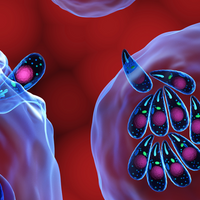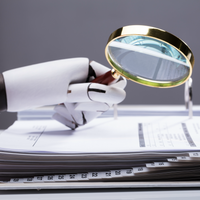AI

Breaking Through Big Data Bottlenecks
Tecan | Dec 1, 2022 | 1 min read
Discover how machine learning helps scientists accelerate their research.

Researchers Report Decoding Thoughts from fMRI Data
Grace van Deelen | Oct 20, 2022 | 5 min read
A method appears to be the first to noninvasively reconstruct language from brain activity.

New Studies Enable a Clearer View Inside Cells
Andrew Chapman | Nov 4, 2021 | 5 min read
Armed with improved imaging techniques and supercomputers, researchers are generating detailed three-dimensional images of cellular structures that anyone can explore.

AI Helps Predict Winners and Losers in Clinical Trials
Roni Dengler, PhD | Aug 3, 2021 | 4 min read
Pradipta Ghosh has plans to revolutionize the drug discovery pipeline.

Algorithm Spots COVID-19 Cases from Eye Images: Preprint
Anthony King | Sep 21, 2020 | 4 min read
A small study shows artificial intelligence can pick out individuals with coronavirus infections, but ophthalmologists and AI experts say the approach is far from proven to be capable of distinguishing infections with SARS-CoV-2 from other ills.

Scientists Oppose NSF’s New Graduate Fellowship Priority
Kerry Grens | Aug 7, 2020 | 2 min read
More than 3,000 researchers have signed on to a petition that expresses concern over the agency’s 2021 application for the funding program, which emphasizes three areas of computational science and might further disadvantage underrepresented groups.

AI Is Screening Billions of Molecules for Coronavirus Treatments
Abby Olena, PhD | May 7, 2020 | 6 min read
Machine learning has pegged existing drugs to repurpose for COVID-19 clinical trials.

Top Technical Advances of 2019
Shawna Williams | Dec 24, 2019 | 3 min read
From artificial intelligence to pluripotent stem cells, this year saw the publication of a bevy of intriguing new methods, as well as tweaks to existing protocols.

Image of the Day: ButterflyNet
Nicoletta Lanese | Aug 16, 2019 | 1 min read
Scientists used machine learning to analyze the coevolution of physical traits in butterflies.

AI Decodes Speech and Hearing Based on Brain Activity
Shawna Williams | Jul 30, 2019 | 2 min read
The proof-of-concept study could be a step toward better assisted communication devices for paralyzed people.

Journals’ Plagiarism Detectors May Flag Papers in Error
Diana Kwon | Jun 25, 2019 | 3 min read
One recent case, in which a scientist claims his submitted manuscript was rejected despite a lack of actual plagiarism, highlights the limitations of automated tools.

Machine Learning “Very Easy to Abuse”
Carrie Arnold | Jun 24, 2019 | 3 min read
Microbiologist Nick Loman talks about the power of artificial intelligence and the best way to use it.

Opinion: How to Define Life
John D. Loike and Robert Pollack | May 2, 2019 | 3 min read
As artificial life forms become more sophisticated, we propose a simple list of criteria to determine whether synthetic biological organisms and robots are living beings.

AI Uses Images and Omics to Decode Cancer
Amber Dance | May 1, 2019 | 10 min read
Machine learning can analyze photographs of cancer, tumor pathology slides, and genomes. Now, scientists are poised to integrate that information into cancer uber-models.

Cerebral Inception
Bob Grant | May 1, 2019 | 3 min read
Our brains have evolved to the point where we can build artificial brains that might help us understand our brains. Let that sink in.

Robert Murphy Bets Self-Driving Instruments Will Crack Biology’s Mysteries
Shawna Williams | May 1, 2019 | 9 min read
The Carnegie Mellon computational biologist thinks machine learning algorithms can direct high-throughput experiments to solve the field’s unanswered questions.

Opinion: AI Beats Animal Testing at Finding Toxic Chemicals
Thomas Hartung | May 1, 2019 | 3 min read
Machine learning could be the key to reducing the use of animals in experiments.

Can Artificial Intelligence Make Scientific Discoveries?
Kartik Hosanagar | May 1, 2019 | 3 min read
The author of a new book envisions a future when machines advance the research enterprise.

Using Machine Learning to Battle Antibiotic Resistance
Amber Dance | May 1, 2019 | 8 min read
Researchers are using artificial intelligence to identify known and novel resistance genes.

Could AI Make Gene Editing More Accurate?
Ashley Yeager | May 1, 2019 | 3 min read
Machine learning algorithms predict the repairs made to DNA after Cas9 cuts.
